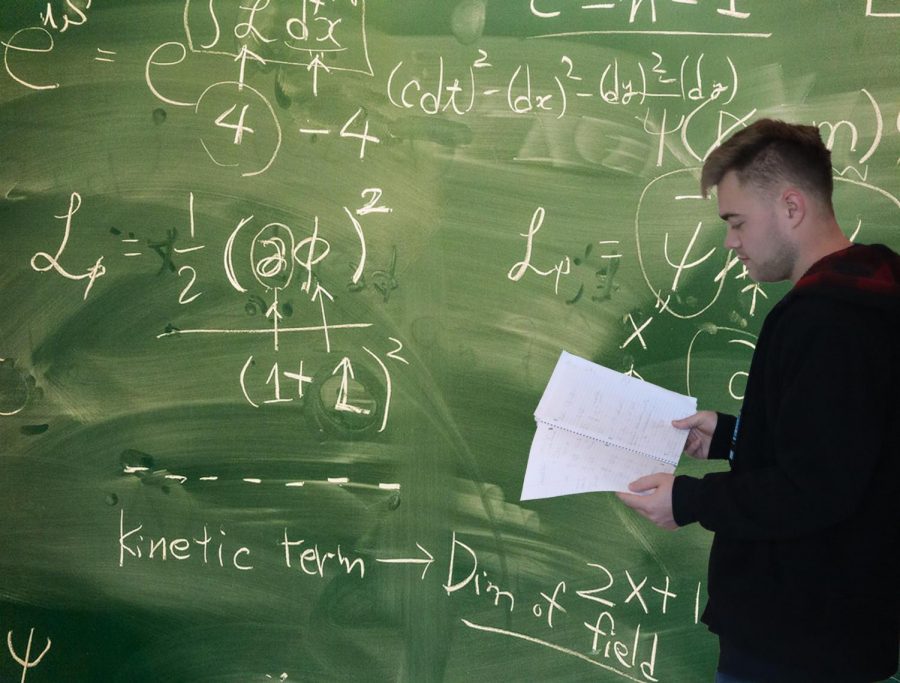CSU considering an additional year of STEM classes for admission
Proposal is set for a vote by the Board of Trustees next month
Photo illustration. The California State University system is currently looking at a proposal to add an additional year of quantitative reasoning coursework to the “A-G” subject admission requirements for the incoming freshman class of 2026.
October 17, 2019
The California State University system is currently looking at a proposal to add an additional year of quantitative reasoning coursework to the “A-G” subject admission requirements for the incoming freshman class of 2026, as stated in the Public Policy Institute of California.
The proposed change is currently scheduled for a vote in November by the CSU Board of Trustees.
“It could be something in math, it could be something in computer science, it could be something from the science department that has quantitative reasoning, so the key word is quantitative reasoning,” said Ravin Pan, an associate professor in the College of Education at Sacramento State.
Pan has developed math courses for several schools, including Sacramento City Unified School District and Sierra College that focus on quantitative reasoning.
The California State University website confirms that if the proposal passes, there would be many options for students to fulfill the new requirement.
In addition to taking an extra math or science course, students could use any elective course which includes some type of quantitative reasoning such as computer science, coding, engineering, statistics, personal finance and more.
Supporters of the proposal say students who enter college with more STEM classes are better prepared and more successful.
“Additional quantitative reasoning preparation in high school dramatically increases the likelihood that a CSU student will complete the quantitative reasoning general education requirement during their first year,” said the CSU Board of Trustees Committee on Education Policy in a presentation Aug. 19.
Critics say that a new requirement would put low-income students in low-performing schools at a greater disadvantage because of a lack of resources.
“The system needs to change first at the elementary, junior high, the high school level, so that our kids are successful, (we need to) set them up to meet these demands, not the opposite way,” said master’s in education student Hannah Fritz. “That’s why you see so many students of color, students in poverty, they aren’t meeting the requirements as they are now, so what makes you think adding more is going to bring justice for those students?”
David Chun, who was a high school math teacher and is now the director of mathematics at the Sacramento County Office of Education, said the potential inability to increase staffing at high schools could be a barrier if the new requirement is put in place.
“Some high schools, for a variety of factors, are able to staff for their needs, (but) there are other places that I know struggle to staff for their needs,” Chun said. “So it’s safe to say that some schools will be able to (meet increased staff requirements if the proposal passes) and some schools will continue to struggle to meet the staffing.”
According to the California State University website, they plan to increase the number of mathematics and science teachers in California by committing an additional $10 million over the next four years.
Yester Voskanyan, a business major, said there are enough requirements now and that adding more will dissuade students from continuing school.
“I felt that I was over-prepared for college-level math and overall over-prepared in general for college,” Voskanyan said. “I think adding another class or another subject wouldn’t really benefit more than it already is with however many they have now.
Undeclared major Kayla Ung said that adding requirements might help with over-enrollment at Sac State.
“This school is really over crowded, I feel like a lot more students are being enrolled than graduating,” Ung said. “I think the higher requirements there are, less students will be enrolled.”
Chun said that there are positives and negatives to the proposed change.
“Some students having the added encouragement to take an additional math course are students that might actually thrive in those conditions, there are many high school students have the potential and need encouragement to do that,” Chun said. “Well, currently we have students that struggle to fulfill a two-year math requirement, so if there is an additional requirement then I think there is potential to increase the struggle.”
Fritz said she felt strongly that there are already enough barriers for getting into college and adding more class requirements was unfair.
“So many kids are having issues of well-being like, ‘Where am I sleeping?’ ‘Where am I eating?’ ‘Where does my next meal come from?’ ‘This person is bullying me because for how I identify,’” Fritz said. “There are so many more things to work through than, ‘I have new requirements to meet.’”





































































































































Student • Oct 25, 2019 at 12:06 am
This is so, so wrong. If an individual student needs help, that is between the student and their adviser. Don’t drag the entire CSU system of students down for a few who may need it. It is my belief that students should be able to take a WPJ-style test to see if they qualify to skip classes like English, Math, and other basic GE courses that are a huge waste of time for people who actually paid attention and remember what they learned in high school. We need ways to bypass current restrictive requirements, not add more. I have friends and roommates who cry from the stress because all it would take is failing one class and they would have to drop out of college for a year or completely because they are poor and must budget for every single class they take. This is needless and cruel and the system obviously isn’t paying attention to student needs and issues. There is always endless money to find ways to force us to pay for extra classes we don’t need, but whenever students need help with housing and food, the system is cheap, penny-pinching, and limits how long you can get help from them.